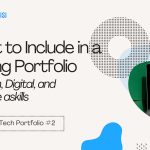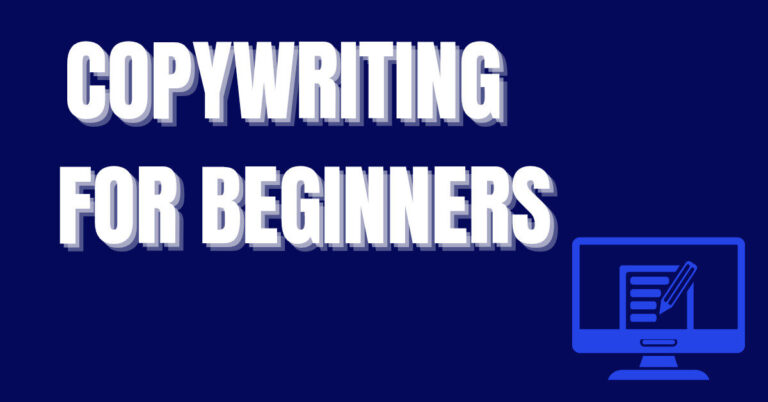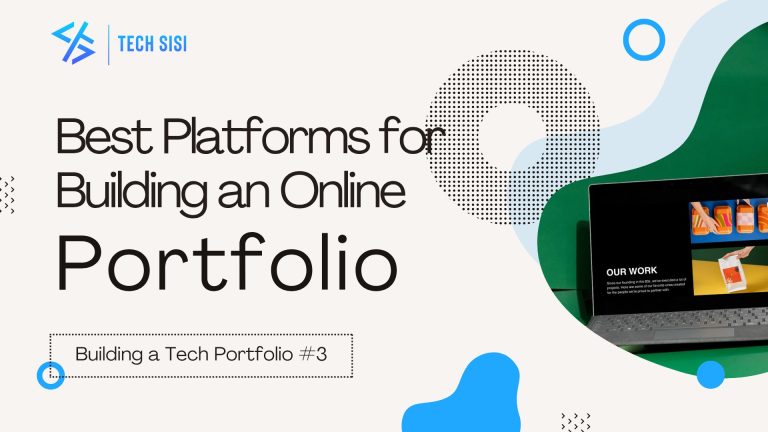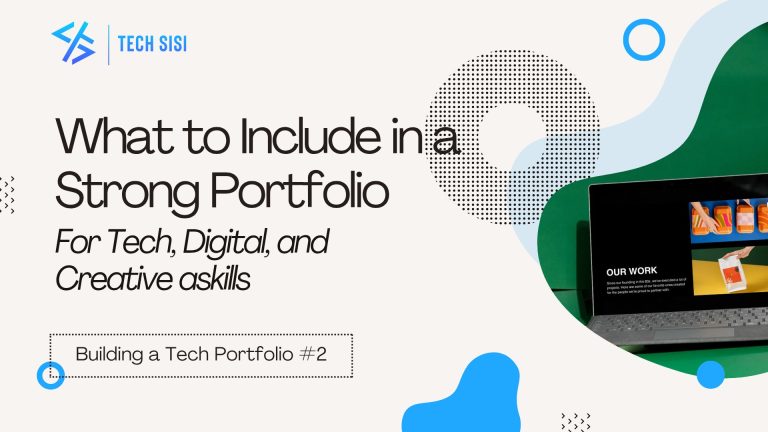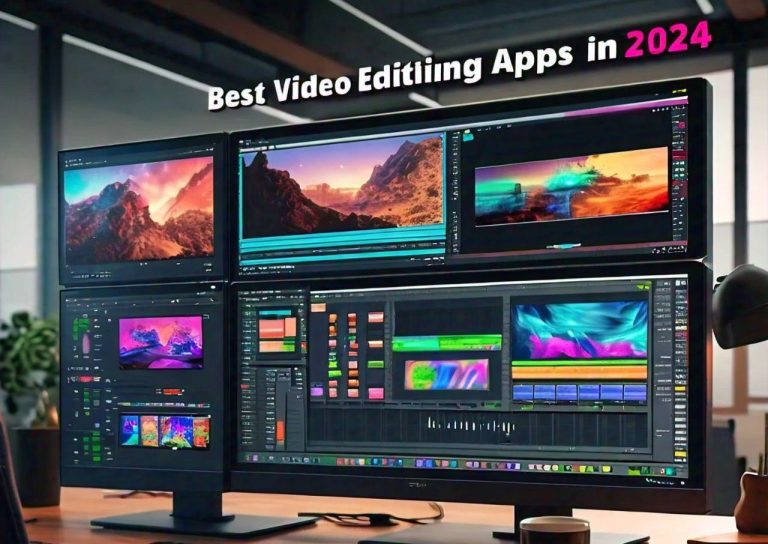Selecting the right projects is crucial for making a strong impression, especially in competitive fields. This guide provides clear steps for choosing impactful projects—whether they’re school tasks, freelance work, or collaborative efforts—to create a compelling showcase of your abilities.
Understanding Your Target Audience

Before selecting projects, consider who will be viewing your portfolio. Are you aiming to attract potential clients, land a specific job role, or showcase your skills in a particular industry? Understanding your target audience allows you to tailor your portfolio to resonate with what they’re looking for. For instance, a company seeking a social media marketer may look for engagement metrics and campaign creativity, while a brand in need of a web developer may value technical prowess and responsive design. Define your audience, research industry standards, and choose projects that align with these expectations, making your portfolio both relevant and compelling.
Key Criteria for Project Selection
1. Relevance
- Align with Your Goals: Select projects that directly relate to your career aspirations and the type of work you hope to secure. For example, if you’re a web developer aiming for e-commerce roles, showcase projects involving complex website builds with functionalities like payment processing and customer reviews.
- Highlight Core Skills: Choose projects that demonstrate your key abilities, whether it’s digital marketing, copywriting, graphic design, or programming. Focus on work that highlights your strengths in your specific field, making it easy for viewers to understand your expertise.
- Showcase Problem-Solving Abilities: Every project in your portfolio should provide insight into how you approach and solve challenges. Include projects that required creative or technical problem-solving and make sure to detail the process and outcome.
2. Impact
- Measurable Results: Quantifiable results speak volumes, whether it’s a marketing campaign that increased engagement, a design that improved user retention, or code that enhanced website performance. Numbers give your portfolio credibility and make your achievements more memorable.
- Positive Outcomes: Highlight the value you brought to each project, whether through higher conversion rates, increased brand awareness, or improved functionality. This can help clients and employers envision how your work might benefit them.
- Show Innovation: Include projects that required you to bring fresh perspectives, tackle challenges creatively, or introduce new ideas. For digital marketers, this could be a successful, data-driven campaign; for writers, it could be a unique voice or innovative structure; for developers, it could be a novel solution to a technical challenge.
3. Complexity
- Highlight Challenging Projects: Including projects with a higher degree of difficulty demonstrates that you’re capable of tackling complex tasks and managing multi-step processes. This could be a project that involved multiple stakeholders, technical integrations, or intensive market research.
- Showcase a Diverse Skill Set: Highlight your versatility by including projects that required you to apply multiple skills, such as blending analytics with creative writing in a content strategy project, or combining UX research with front-end development. This breadth of skill demonstrates adaptability and a well-rounded approach.
4. Visual Appeal
- Maintain a Clean, Professional Design: First impressions matter, so ensure that your portfolio is visually cohesive. Use consistent colors, typography, and layout to create a polished look that reflects your professionalism and attention to detail.
- High-Quality Visuals: Use clear, well-lit images and optimized videos to showcase your work effectively. For designers, this could mean high-resolution mockups; for marketers, infographics; for developers, annotated screenshots or code samples.
- Use Engaging Storytelling: Each project should tell a story. Describe the initial challenge, your approach, and the outcome to create a narrative that guides viewers through your problem-solving process. This storytelling approach makes your portfolio more engaging and memorable.
Leveraging School and Side Projects
School and side projects can be excellent portfolio additions if chosen strategically. These projects often showcase your passion and dedication to skill development and may reveal your capacity for innovation. Here’s how to effectively leverage them:
- Highlight What You Learned: Even if the project was part of an assignment, explain what you learned and how these skills have since contributed to your growth. This shows employers and clients that you’re committed to self-improvement and skill mastery.
- Showcase Initiative and Drive: School and personal projects often reveal your independent work ethic and creativity. Emphasize your proactive approach and capacity for independent problem-solving, which can be appealing to potential employers and clients.
- Quantify Contributions and Results: Whenever possible, add metrics or outcomes to demonstrate the impact of your work. For example, a personal blog that attracts hundreds of visitors a month, or a self-designed app with positive feedback on a public platform, showcases your capability to create value.
Collaborations and Open-Source Contributions
Collaborative work and open-source contributions demonstrate teamwork, adaptability, and often a higher level of exposure to industry practices. These projects can strengthen your portfolio if positioned correctly:
- Clarify Your Specific Role: Clearly articulate your contributions, whether they were technical, creative, or strategic. Specify your role to help viewers understand your unique contributions and what you bring to a team.
- Highlight Teamwork and Communication Skills: Many companies value soft skills, so be sure to include projects that required you to collaborate and communicate effectively. Describe how you worked with others and navigated any team dynamics or project constraints.
- Understand and Mention Open-Source Licenses: If you’re including open-source work, ensure you’re adhering to licensing terms, as this can affect your portfolio’s use. Mentioning your participation in open-source projects demonstrates community engagement and a commitment to continual learning.
Curating Your Portfolio
Once you’ve identified projects to include, focus on curating your portfolio so it leaves a lasting impression:
Related Posts
- Quality Over Quantity: Showcase a select number of high-quality projects rather than a large volume. Prioritizing impactful work over quantity allows you to direct viewers’ attention to your best efforts and avoid overwhelming them.
- Use Narrative and Storytelling: Structure your portfolio to take viewers on a journey. For each project, briefly outline the problem, your approach, and the results. Good storytelling creates emotional engagement, making each project more memorable.
- Provide Clear, Concise Descriptions: Summarize each project to keep readers engaged. Describe your role, the challenges faced, and how you approached them, making it easy for viewers to understand your contribution and the project’s significance.
- Keep It Updated: Portfolios should evolve as you do. Regularly update your portfolio with your latest work, achievements, and new skills. An up-to-date portfolio shows that you are active in your field and current with trends.
Following these steps will help you create a compelling, polished portfolio that highlights your strengths, versatility, and impact. Whether you’re looking to land a job, attract clients, or build a professional network, a carefully selected and well-presented portfolio is one of the best tools you have to reach your goals.
-

Driving digital solutions for businesses and individuals using technology. Tech Clarity Coach || Writer || Author || Digital Entrepreneur || Digital Marketer || Web Development Enthusiast || Founder – Tech Sisi
View all posts -

Precious Gabraels (Precious Okechukwu Nwosu) is a tech enthusiast. A professional Web Developer, Blogger, SEO Specialist, and Digital Marketer. He is also a co-founder of Nova Vamp Web Design Consultancy which specializes in the digitization of businesses.
View all posts
Tags: digital skills portfolio



